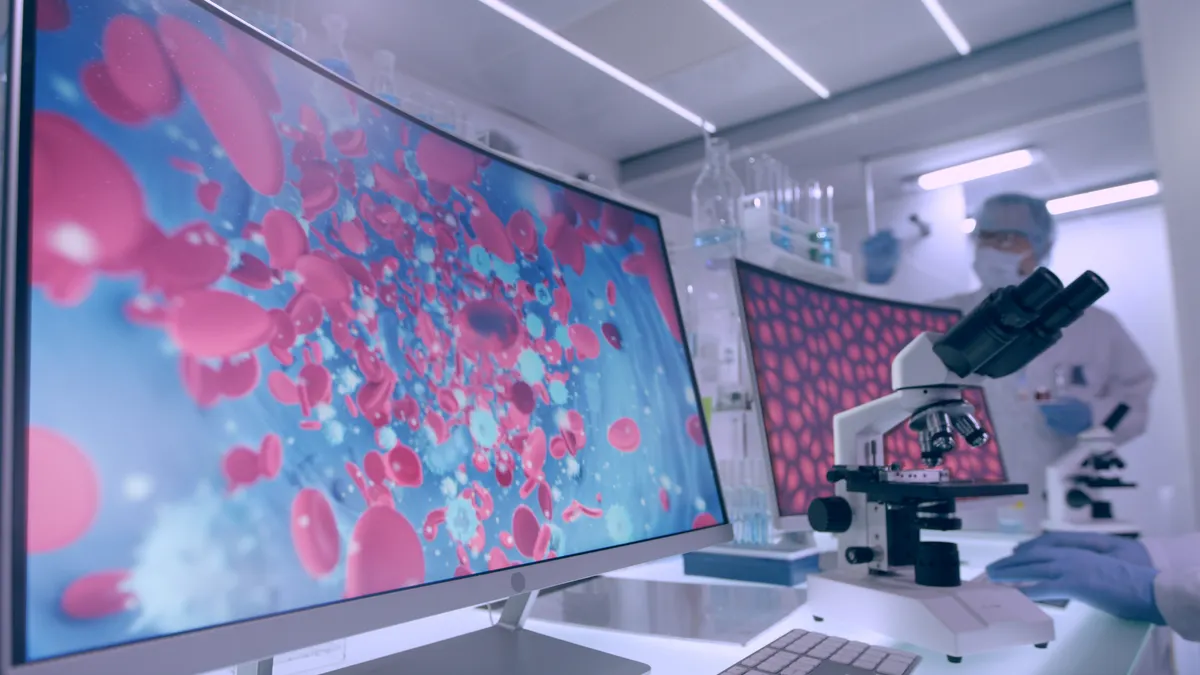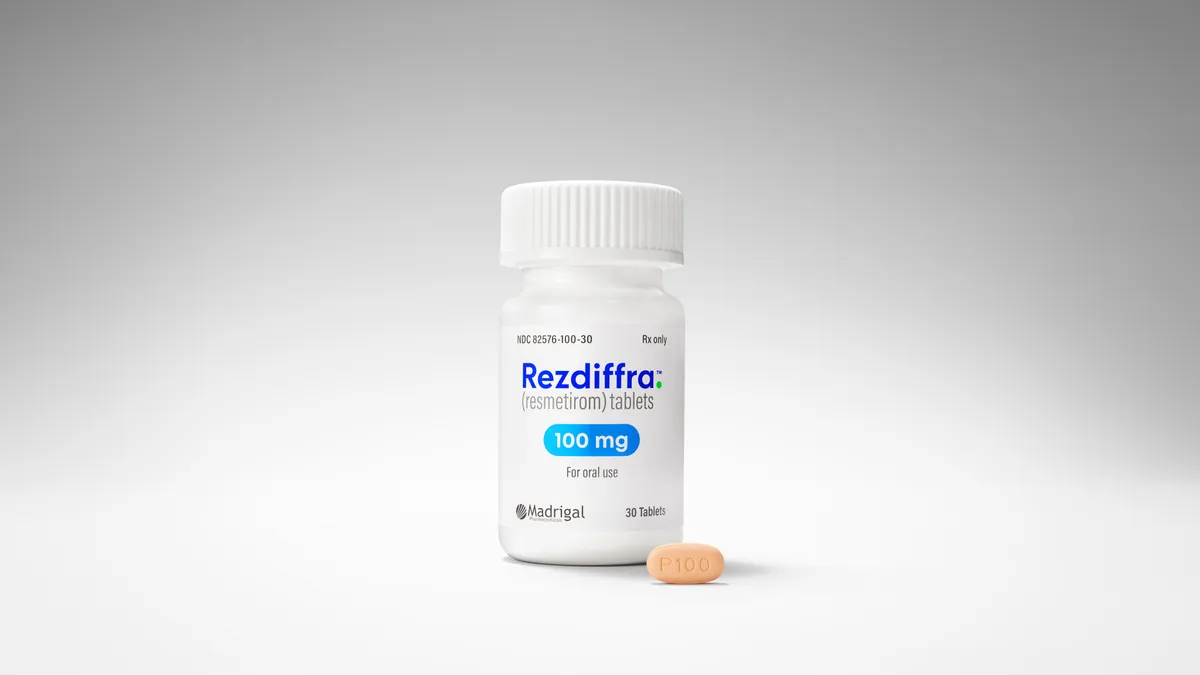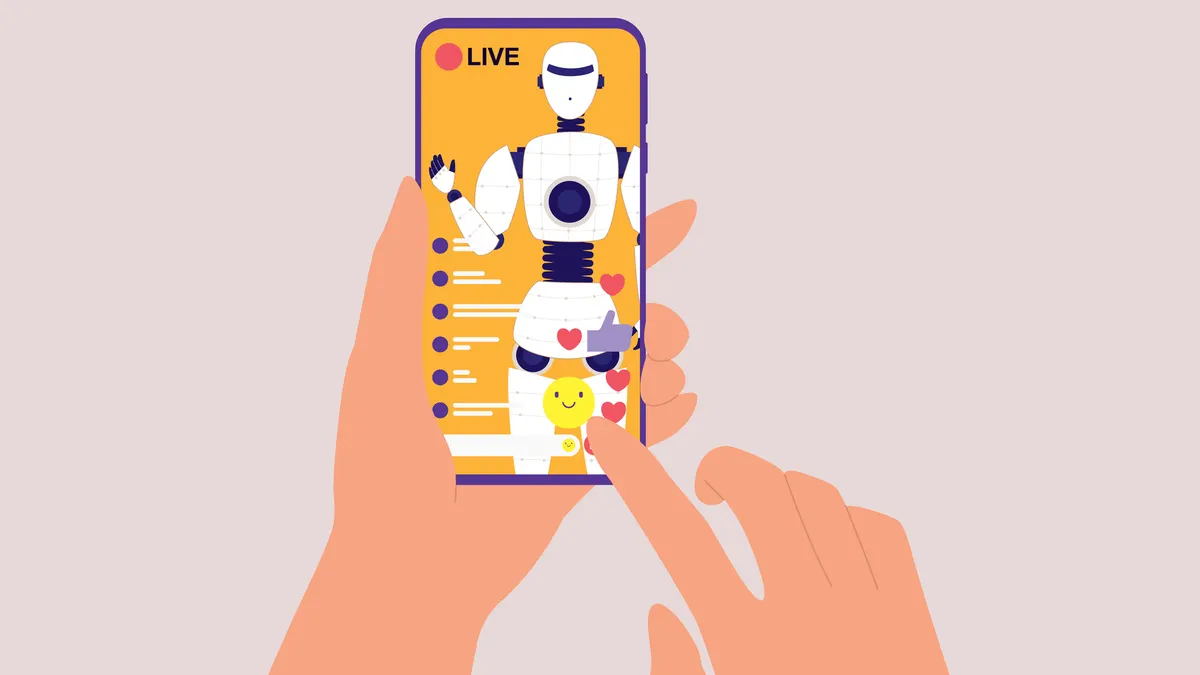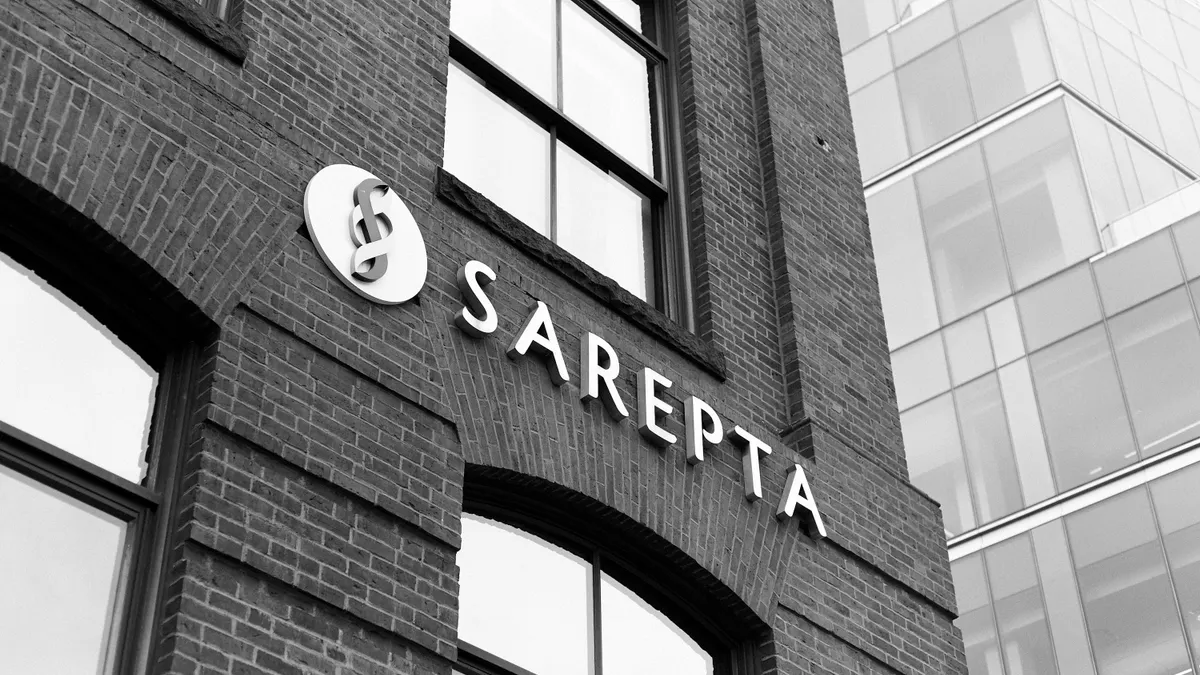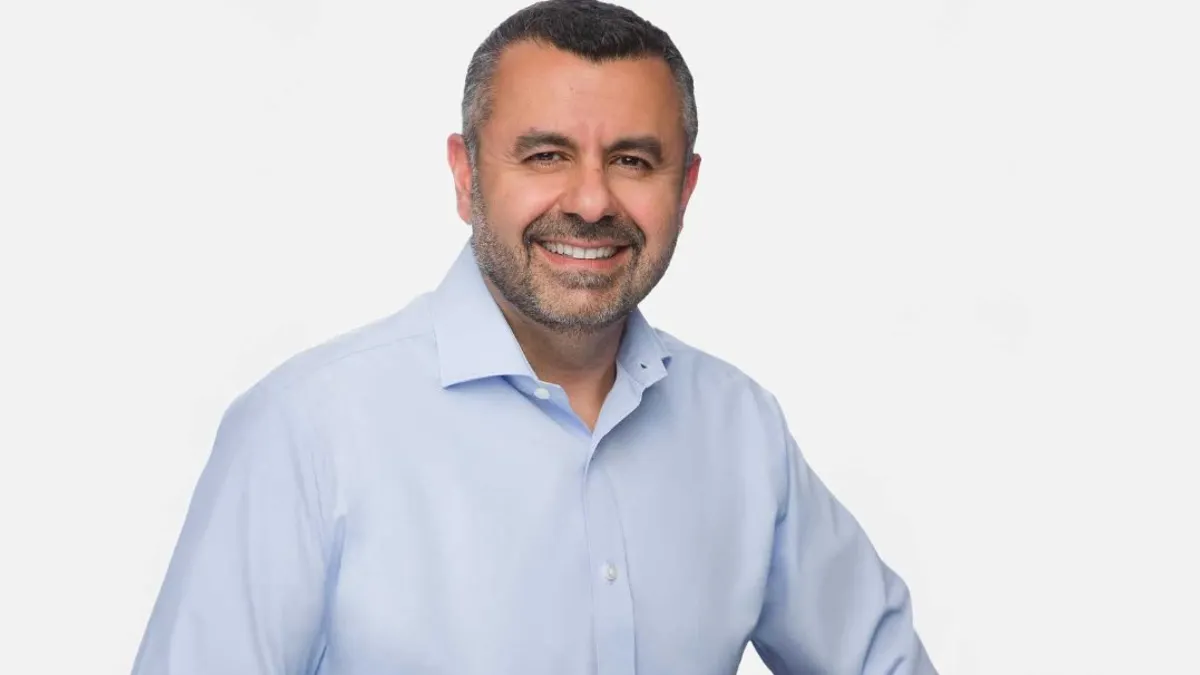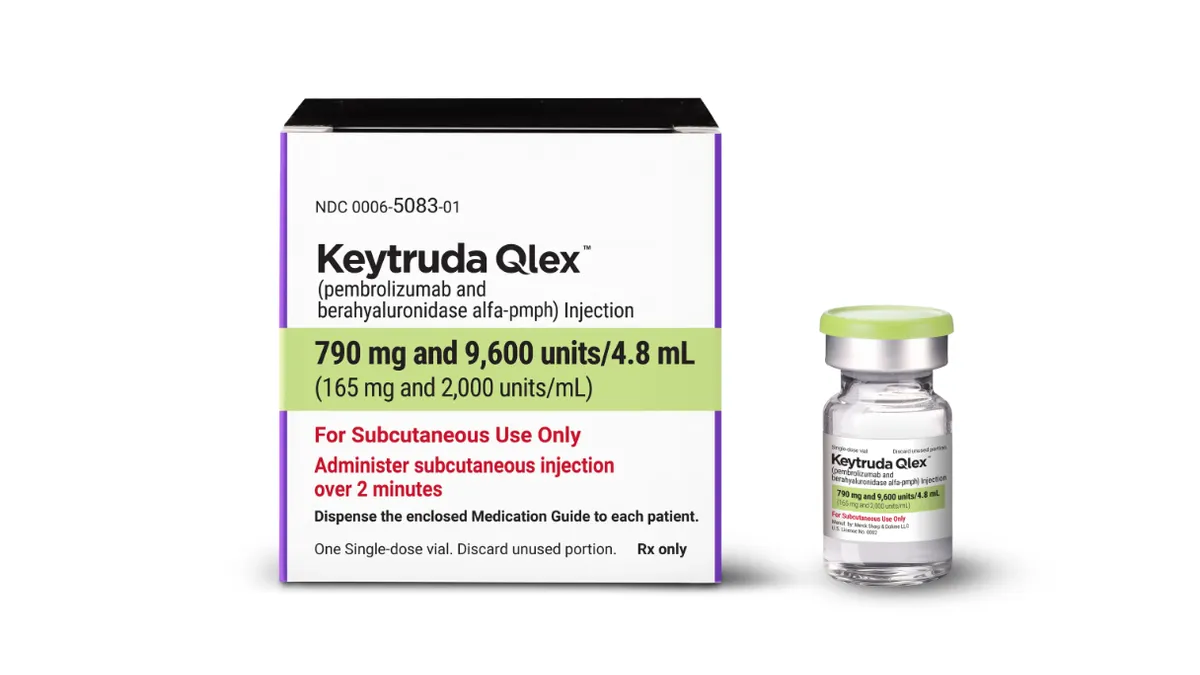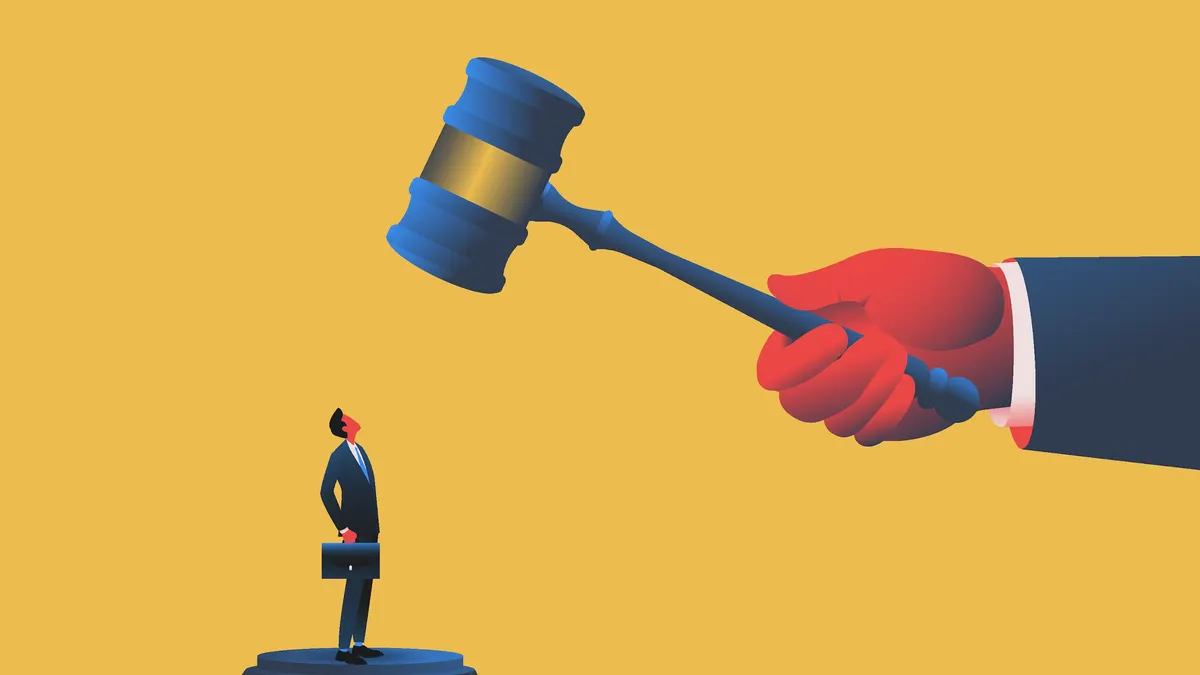The Creative Key Elements
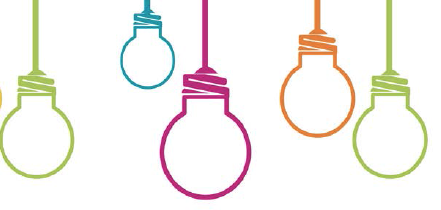 One marketing expert has stated that in addition to hard work, there are usually four key elements in a great ad: a disruptive and relevant visual, strong brand identification, a brilliant headline, and “something else." Industry creative experts discuss what they believe are the key elements in a great ad and provide what they believe is that something else.
One marketing expert has stated that in addition to hard work, there are usually four key elements in a great ad: a disruptive and relevant visual, strong brand identification, a brilliant headline, and “something else." Industry creative experts discuss what they believe are the key elements in a great ad and provide what they believe is that something else.
Norbert de Laclos
Chief Creative Officer, Natrel
The way information has permeated our lives from all sides, breakthrough creative is more important than ever before. And customers — patients and clinicians — are bombarded across a variety of medical content channels every day. With so much information out there, the risk of the audience tuning out or turning away has increased significantly. That said, if the client/agency team has pushed the brand to a truly compelling place and it is firmly established in the market, we don’t necessarily need the “something else." The key challenge at that point is maintaining brand consistency and exploring new channels. It’s at launch that the “something else" may be needed.
Louis Massaia
Executive Creative Director, Palio, an inVentiv Health company
I believe that the something else comes down to whether or not the ad is capable of capturing a feeling. That’s the magic factor, and it separates the good from the great. Advertising is an art form, and like any other art form, we have to factor in the intangible element that makes people want to engage. So that something else becomes the sum of all the parts working together to create a presence that demands attention and makes the audience feel something.
Jack Hyndman
Head of Creative, Fingerpaint
The key elements of a great ad are one great insight; a real, definable point of differentiation; relevance to the target audience; one big idea; brilliant headline; killer image; great design; engaging user experience; unique use of selected media; and campaign flexibility across multiple channels.
The something else is simplicity. Charles Mingus said that “making the simple complicated is commonplace; making the complicated simple, awesomely simple, that’s creativity." Complexity is the necessary input to the creative process; simplicity is the output — it has to be in order for ideas and brands to break through in today’s cluttered media landscape.
Steve Hamburg
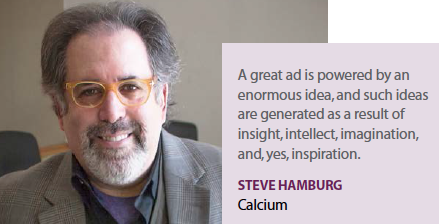 Partner, Chief Creative Officer, Calcium
Partner, Chief Creative Officer, Calcium
First and foremost, a great ad is powered by an enormous idea, and such ideas are generated as a result of insight, intellect, imagination, and, yes, inspiration. A great ad rewires the way we think. It delivers a cognitive jolt and gets our neurons firing in new and interesting ways. A great ad surprises us, wakes us up out of our slumbers, and makes us pay attention and take notice, which is no small feat in this distracted age of ours.
A great ad works holistically, with all the constituent parts working together in a kind of organic harmony. This makes a great ad a living and breathing thing. You can’t alter one element without fundamentally changing the whole enchilada. It’s possible to have brilliant copy and brilliant design without having a great ad. Why? Because it’s not the individual elements but the interaction between elements that can give an ad the pulse of greatness.
Great creative excites us by taking us to a new place. And that, I believe, is the “something else" variable. Has the ad transported us to new feelings, thoughts, and perceptions? Has it given us a new and memorable experience? Has it expanded our cultural vocabulary? Great creative does more than entice and engage; it rewards and enriches. It tells a powerful story that we can powerfully relate to because, on some level, the story is about us.
Richard Campbell
Partner, MRB Partners
First, there needs to be a clear attitude. Brand personalities are often created by committee and stretched in contradictory directions: e.g., a warm-and-fuzzy revolutionary. By contrast, a finely drawn brand personality focuses creative energy and results in work that connects with customers.
Second, there has to be a relentless focus on a single strategic benefit. Even a world full of feature geeks wants to know how a product improves lives.
Single-mindedness is its own reward: By saying one thing well, it’s easier for the audience to remember it. Third, there must be a tight fit between copy and art. Make one say something that the other doesn’t, and copy and art will say more together than either alone. It’s an additive effect. The moments effort for viewers to put the pieces together and “get it" provides a small reward that makes the story more memorable.
The something else is making the audience care. More than just being comprehended, the story has to engage the customers’ hearts and minds to compel behavior. People have to understand what you’re offering but also care that it’s worth their interest. A former colleague called this characteristic resonance — not a bad way to express it.
Benton Ingersoll
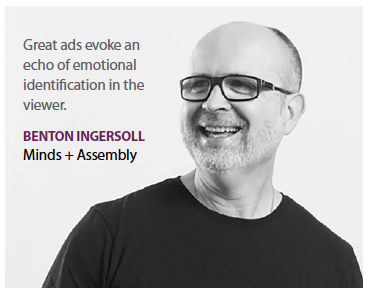 Co-founder and Content Director, Minds + Assembly
Co-founder and Content Director, Minds + Assembly
Déjà vu is the missing element. Great ads evoke an echo of emotional identification in the viewer. You feel deep down inside that you’ve felt or known whatever the ad is conveying and that gives you a thrill, which then becomes associated with the brand. As for the other pieces — visual, brand ID, and headline — those may be elements of great advertising, but they don’t have to all be present. In fact, there’s such a thing as too much of a good thing. A super-clever headline paired with a super-clever visual is often super-annoying. The last thing is that execution itself, the photography or illustration, the type design and layout, can easily win the day.
Stephen Neale
Senior VP, Executive Creative Director, AbelsonTaylor
To us, a great ad must meet five criteria: it gets the message across quickly, it evokes a strong emotion, it’s campaign-able, it’s relevant, and it’s distinct or breaks through the visual clutter. We think that engagement is the je ne sais quoi, the critical element that elevates 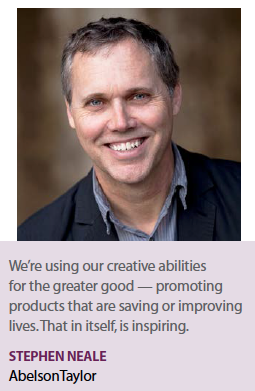 great ad campaigns today. This critical element gets viewers to become participants. It moves them beyond the words and pictures, and regardless of the medium — print, digital, broadcast — gives them a reason to act and return, ultimately becoming loyalists.
great ad campaigns today. This critical element gets viewers to become participants. It moves them beyond the words and pictures, and regardless of the medium — print, digital, broadcast — gives them a reason to act and return, ultimately becoming loyalists.
Graham Mills
Global Chief Creative Officer, Digitas Health LifeBrands, Publicis Life Brands, and Heartbeat Ideas
What I look for is a sense of connection and identifying a purpose between the brand and the audience. Today, as brands become bigger than advertising, it’s about feeding a long connection, such as how does this brand fit into a patient’s life. How does it make a difference? How does the story fit into a patient’s journey? We’re not selling graham crackers; there has to be that connection.
The other thing I look for is simplicity. Sometimes I think we are coaxed into telling overly complicated stories. It’s better to figure out what the one thing is that needs to be said and say that and then let the other stuff be discovered as people engage with the brand.
Amy Hansen
Senior VP, Creative Director, HCB Health
No matter how much new technology and media mess with the definition of an ad, one thing remains the same: it requires great perseverance to push through the mediocre, the see-say, the overdone, the obvious, the self-serving, the self-doubt, the judgment, the panic attacks, and the sheer exhaustion that threaten greatness. We hold in our imagination the power to move people, to give them chills or goose bumps; to touch their hearts and bring tears to their eyes. But it requires perseverance at every step — from mining that perfect precious insight, to rallying support around a big idea, to flawless execution.
Kathy Delaney
Global Chief Creative Officer, Saatchi & Saatchi Wellness
The something else is the engagement factor. A great piece of work has to encourage people to want to learn more or to hear more of the story, to share it, to talk about it on other platforms. There has to be a virility to it, if you will, to make an ad truly great.
The Creative Process
With so many media — print, TV, digital, social, etc. — available today for message delivery, our agency experts discuss how the creative process has changed or not changed in light of so many channel options.
Louis Massaia
Executive Creative Director, Palio, an inVentiv Health company
The creative process is never the same because it’s a personal and individual experience. People arrive at ideas because they are open to all influences, and so much of that happens on the subconscious level. Every day we live and interact with ever-evolving media that are modern conduits to our creative expressions. All those channels are hardwired into our ideation process. An idea isn’t born as a perfectly rolled out media plan; it has to be tailored to fit. It’s helpful to understand where and when your idea might come to life.
Steve Hamburg
Partner, Chief Creative Officer, Calcium
The proliferation of media forms continues to alter the way people consume creative. Experientially speaking, a website is very different from a print ad, a TV campaign very different from an electronic sales aid. To maximize creative effectiveness, we must have a deep understanding of what makes each medium tick — or click — and a strong ability to tailor our creative expression to fit the unique properties of different mediums.
Even though the tactical aspect of creative thinking has changed, and is changing, one important aspect remains largely unchanged: the deep think, conceptual part. Really big creative ideas — RBCIs — are still generated the old-fashioned way, through deep thought and reflection; the dance of imagination and the grind of experimentation; through the relentless asking of questions; and through hard work and good luck. No matter how many new media channels are created, the core practices underlying the big idea creative process will stay somewhat constant.
Graham Mills
Global Chief Creative Officer, Digitas Health LifeBrands, Publicis Life Brands, and Heartbeat Ideas
Media is as much a part of the idea as art directing or copywriting or branding. If you try to create an ad without understanding the media it’s going to be a struggle to understand not just what it is people want to hear, how they want to hear it, but really where they want to hear it. Should it be a TV ad? Should it be a documentary series? Should it be a print ad? Should it be a book? The challenge is to create something unique, absolutely relevant, and in exactly the right format for the audience that needs it.
Norbert de Laclos
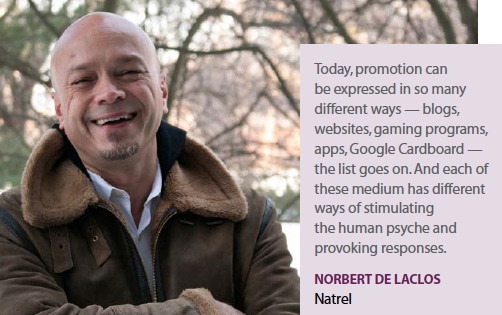 Chief Creative Officer, Natrel
Chief Creative Officer, Natrel
Previously, the term multimedia described a very narrow scope of promotional expression. Communication was relatively static, flat, one-dimensional. Someone would create the print campaign and someone else would do the website. Today, promotion can be expressed in so many different ways — blogs, websites, gaming programs, apps, Google Cardboard — the list goes on. And each of these medium has different ways of stimulating the human psyche and provoking responses. Each generates a unique experience, with its own ripple effect. But if these diverse offerings are properly orchestrated, they can unite to become a powerful generator of behavioral change. So, brands must be built in a way that allows them to evolve with their audience, to follow the cultural trends, and adapt their visual and verbal storytelling to each new environment. Perhaps more importantly, today’s rich and varied media environment offers many opportunities for the brand’s personality to take center stage and shine.
Jack Hyndman
Head of Creative, Fingerpaint
The availability of so many media options has not changed today’s creative process. At least, not for agencies that are incorporating integrated, multidisciplinary teams as a standard approach to breakthrough thinking. It’s the age of collaboration. You can’t cheat the depth of discussion needed to critically think through client problems successfully. The collective brainpower derived from integrated, multidisciplinary teams is necessary to ensure ideas are flexible enough to drive engagement across many channels.
Richard Campbell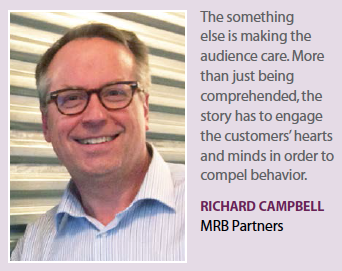
Partner, MRB Partners
Tactical options and media choices are constantly evolving. This means, more than ever, people need a clear product story based on a real customer need. There needs to be a central idea, a benefit story that the brand can consistently stand for wherever it goes and however it gets there. The plethora of media has changed how we evaluate ideas. Because the story has to be able to go everywhere, we have to weigh the leading ideas for their capacity to accommodate that need. The process now has to include a second creative process to see how flexible, portable, and extendable the ideas can be.
Amy Hansen
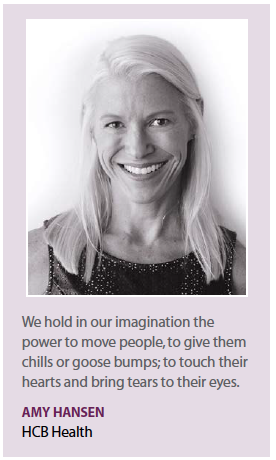 Senior VP, Creative Director, HCB Health
Senior VP, Creative Director, HCB Health
The idea that we are creating ads feels very old school. In today’s world of infinite channels, platforms, and smart everything, it is our responsibility to our clients and their customers to create a meaningful and relevant brand experience. This requires a much better-informed creative process. Data and planning are essential inputs. They enrich content and tone, identify who and where the most receptive customers are, and when they might be most open to engaging with a brand’s message. This information must be part of the creative brief so that you begin the process, not with a single interaction in mind, but with the intent of creating enduring, respectful, and rewarding relationships.
Benton Ingersoll
Co-founder and Content Director, Minds + Assembly
For years, we’ve been blathering on about how “it’s not the ad, it’s the idea." Yet, in large part because of the way executions are tested, ads are usually the default when it comes to creating a new campaign. The rise of digital media and what we call native media, or new channels, has created the momentum needed to bring those aspirations closer to reality, despite the fact that creative testing remains mired in the past. In fact, how something is delivered has become as fertile a creative territory as what it is we’re saying or showing. Another nice benefit of this movement is that there’s more focus on both the customer truth and behind that, the problem we are trying to solve.
Stephen Neale
Senior VP, Executive Creative
Director, AbelsonTaylor
There are literally thousands of channels today, and they all compete for users’ attention, which is the reason we’ve added the engagement element into our creative process. However, engagement can mean different things and is different in every channel.
Last fall we established a division called the Experience Design Group, which provides a focused view of how technology, analytics, and digital can contribute to campaigns and thereby break through today’s marketing noise. The new division partners with planners, developers, and creatives to map out the user journey and uncover those areas that can lead to deeper engagement. But even though our creative process now includes a larger group to accommodate the new channels, our objective remains the same — produce a great distinctive creative idea/story that resonates with the target audience.
Inspiration
Creating great advertising entails creativity and inspiration. Our creative experts talk about where they draw inspiration from and how they keep their creative teams inspired.
Louis Massaia
Executive Creative Director. Palio, an inVentiv Health company
For me, creative inspiration just comes by simply keeping my eyes open and my mind in a place that lets inspiration in. Lots of internal dialogue also seems to work for me. For me, it’s always been about allowing myself to take notice of the nuances that surround life and human behavior. It’s the details that hold me engaged in advertising and in life — so an acute awareness level is the most important tool. This awareness helps me find the cracks in things, and that’s where the most interesting stories lie. I also do not take for granted that creative inspiration seems to keep coming — for that I’m grateful.
The best advice I have for all creative teams is: don’t force it. It can be so easy to get lost in all the possibilities. Always put the idea first, the style and voice will follow. Then let the nuances give it its tone, its feeling. Advertising is just like music; it’s a limitless art form, and it can be intimidating.
In my opinion, the most valuable commodity in this business, in every business, is original thought.
Steve Hamburg
Partner, Chief Creative Officer, Calcium
To me, the best creative is idea-driven, so I’m drawn to other forms of creative expression that are similarly idea driven — books, films, art, music. But great creative also tells a story, so I find inspiration in many forms of narrative, from movies and TV shows to all sorts of fiction, spy novels are a favorite. And because design is such a critical component of great creative, I’m constantly educating my eye by seeking out outstanding, cutting-edge work in the world of fine arts, photography, graphic design, and industrial design.
Of course, the history of advertising itself also provides an abundant source of inspiration for my own creative work. I find that each of the major advertising eras has something unique and fascinating to offer.
Graham Mills
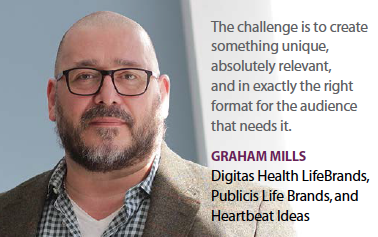 Global Chief Creative Officer, Digitas Health LifeBrands, Publicis Life Brands, and Heartbeat Ideas
Global Chief Creative Officer, Digitas Health LifeBrands, Publicis Life Brands, and Heartbeat Ideas
I love talking to creatives from outside of the business. I love talking to musicians or artists, screenwriters — people who work in different formats and are creative in very different ways. I have a real thing for architecture and I love talking to architects about how they confront designing a building. I have one architect friend who told me he doesn’t design buildings, he designs the spaces in between. I think this a really interesting principle for advertising as well. It’s not just about creating ads, it’s creating what goes on around the ad — the bigger experience.
Jack Hyndman
Head of Creative, Fingerpaint
I am constantly curious and draw creative inspiration from all around me. I see things that spark my interest and inherently want to know more by digging deeper, deconstructing them, trying to understand why they work, and the strategy behind them.
I’m also always asking, “why not pharma?" A best practice to stay creatively inspired is to stay thirsty and stay constantly curious. We share ideas all the time, both formally in inspiration meetings and informally where we just pass stuff around. We also share educational information across all sorts of topics.
A while back we established a creativity lecture series where accomplished professionals specifically from outside the advertising industry are invited to talk about their processes, attitudes, point of views, and inspiration involved in their creative endeavors. This gives our team a different perspective by providing new and fresh ways to think about and approach creativity.
Stephen Neale
Senior VP, Executive Creative Director, AbelsonTaylor
I’m really inspired by contemporary fine art. Artists like Jean-François Fourtou, José Lerma, and Banksy, to name a few, inspire me to see things outside of a regular environment and connect them to advertising in a new way. The best creative ideas I’ve come up with come from this passion for contemporary art.
All of our creative leaders inspire their teams in different ways. The one common thread is that we encourage our teams to connect whatever sparks their passion with assignments they’re working on — whether it’s love of movies, contemporary art, or progressive rock music.
Working in this industry can be challenging. Yes, our work is subjected to a huge number of restrictions. Yes, there are times when clients dictate the creative output. But in the end, we know that our work is different. We’re working for a higher cause. We’re using our creative abilities for the greater good — promoting products that are saving or improving lives. That in itself, is inspiring.
Kathy Delaney
Global Chief Creative Officer, Saatchi & Saatchi Wellness
I draw inspiration from everywhere. We have an initiative here called Outer Space. It’s a program designed to get people out of their physical office space, out of their head space, and open them up to new experiences that ultimately will stimulate them to be a more creative thinker. We take people down to the East Village to do a tour of the best graffiti spots. We have different storytelling classes that have nothing to do with brand storytelling. We go to events at museums to get people to experience things from the art world, from the literary word, from the food world. Taking those little mind breaks can open you up and get you inspired.
I also make sure that all of the teams here have a healthy dose of pro bono time that they get to work on in their spare time to keep them fresh. I also do something called Throw-down Thursdays here where I get everybody together. I give a brief, and I give them one week to come back with one idea, which means they really need to edit their ideas down to the best one and then they get one minute to present it to the entire team. This has been a big success and has allowed people just to get out of their day-to-day jobs and open and stretch their minds creatively on a totally different project or problem. (PV)




